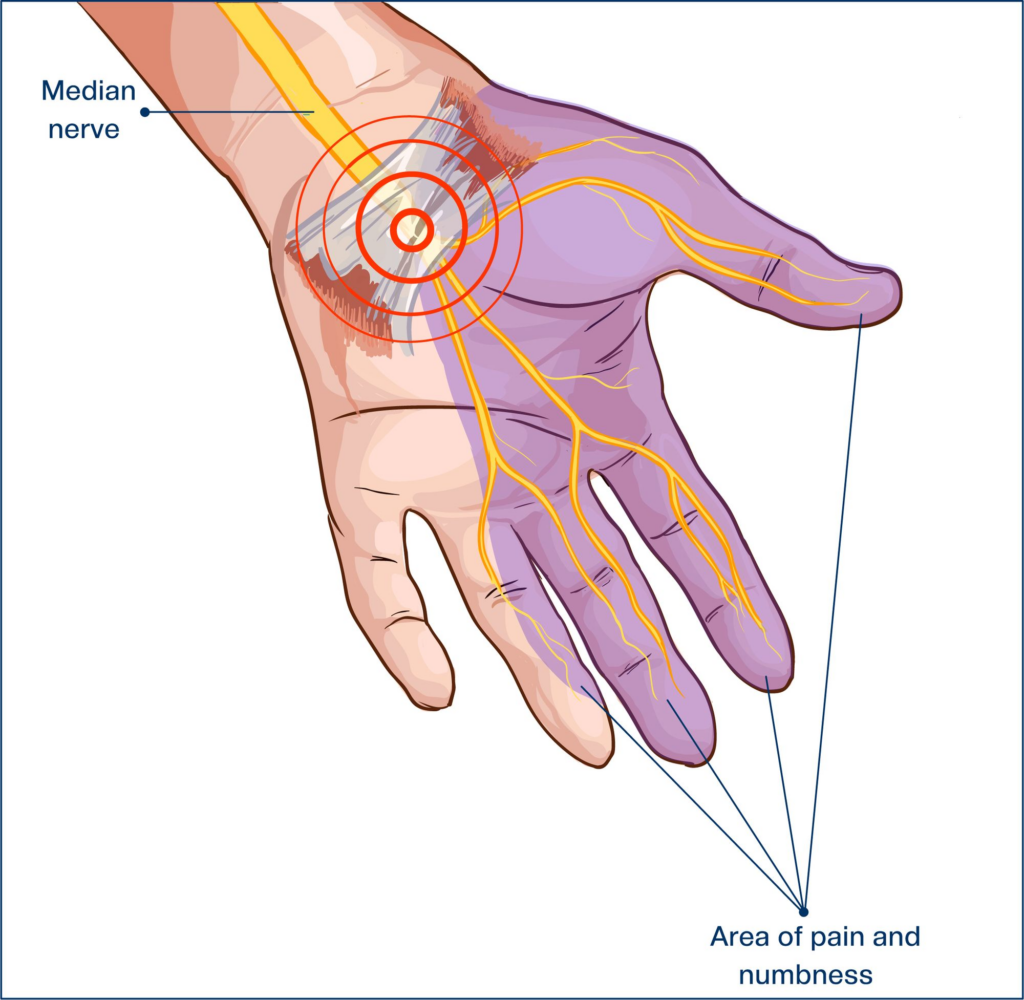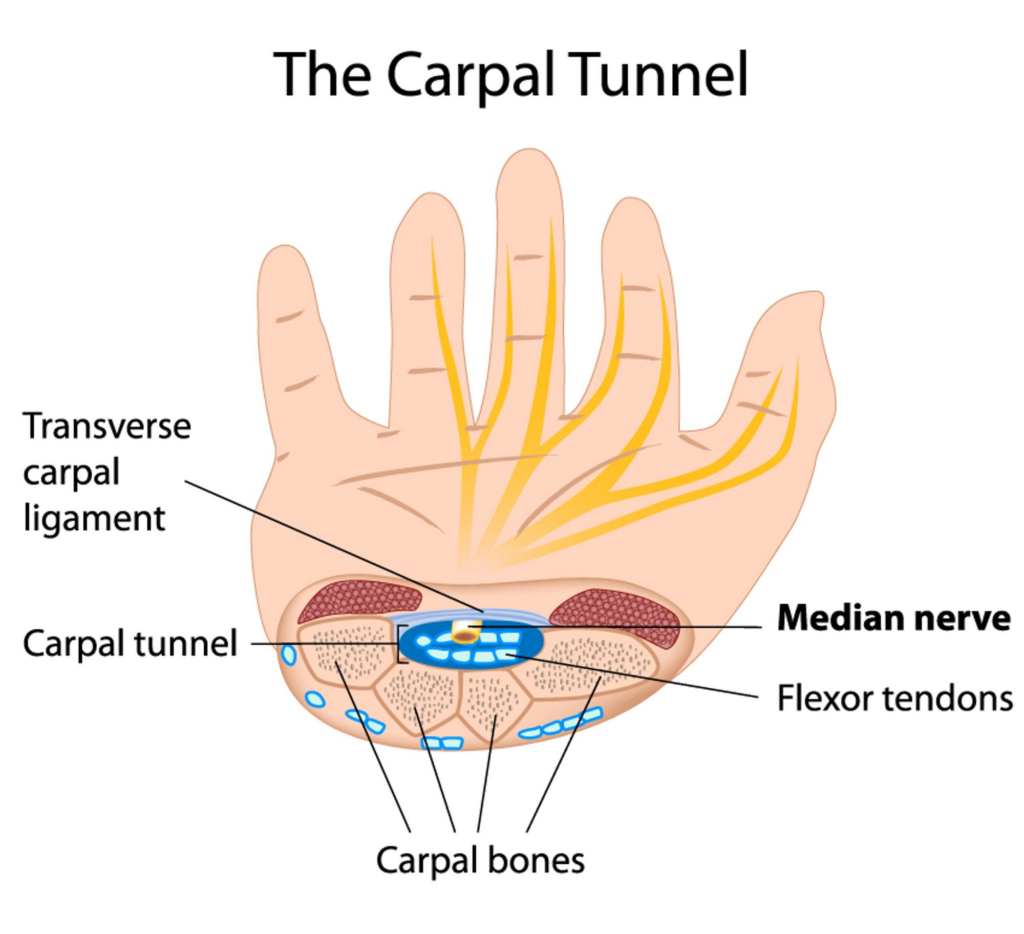Hand and Wrist Pathology: Carpel Tunnel Syndrome
Carpal Tunnel Syndrome (CTS) is a common hand pathology characterized by the compression of the median nerve as it passes through the carpal tunnel in the wrist. The carpal tunnel is a narrow passageway formed by the carpal bones of the wrist and a tough band of connective tissue called the transverse carpal ligament.
Carpal Tunnel Syndrome (2 mins 27 secs)

The compression of the median nerve can be caused by various factors, including:
- Repetitive Hand Movements: Activities that involve repetitive flexion and extension of the wrist or repetitive use of the fingers and hands can contribute to the development of CTS. This includes activities such as typing, using vibrating tools, or playing musical instruments.
- Trauma or Injury: Fractures, sprains, or dislocations of the wrist can lead to swelling and inflammation in the carpal tunnel, putting pressure on the median nerve.
- Anatomical Factors: Some individuals may have a smaller carpal tunnel naturally, which increases the likelihood of nerve compression. Certain anatomical variations or abnormalities in the bones and tissues surrounding the carpal tunnel can also contribute to CTS.
- Medical Conditions: Certain medical conditions such as rheumatoid arthritis, diabetes, hypothyroidism, and pregnancy can increase the risk of developing CTS. These conditions may cause inflammation, fluid retention, or metabolic changes that affect the carpal tunnel.

The compression of the median nerve in CTS leads to a variety of symptoms, including:
- Numbness and Tingling: The most common symptom is numbness and tingling sensation in the thumb, index finger, middle finger, and half of the ring finger. These symptoms often occur during activities that involve wrist flexion or prolonged hand use.
- Pain and Discomfort: Individuals with CTS may experience pain in the hand, wrist, and forearm. The pain can radiate up the arm or even into the shoulder. The pain is often described as a burning or electric shock-like sensation.
- Weakness and Muscle Atrophy: Chronic compression of the median nerve can result in weakness and muscle wasting in the hand. Grip strength may be reduced, making it difficult to hold objects or perform fine motor tasks.
Diagnosing CTS typically involves a combination of clinical evaluation and diagnostic tests, including:
- Medical History and Physical Examination: The doctor will inquire about symptoms, medical history, and perform a physical examination to assess the hand, wrist, and arm for signs of CTS.
- Nerve Conduction Studies (NCS): NCS measures the speed and strength of electrical impulses as they travel along the median nerve. This test helps determine the presence and severity of nerve compression.
- Electromyogram (EMG): EMG measures the electrical activity of muscles. It can help identify any muscle damage or loss of function resulting from CTS.
Treatment options for CTS depend on the severity of symptoms and may include:
- Non-Surgical Treatments:
- Resting and modifying activities that worsen symptoms.
- Wearing a wrist splint to keep the wrist in a neutral position and alleviate pressure on the nerve.
- Medications, such as nonsteroidal anti-inflammatory drugs (NSAIDs) or corticosteroids, to reduce pain and inflammation.
- Physical therapy exercises to strengthen muscles, improve range of motion, and alleviate symptoms.
- Surgical Intervention:
- In cases where non-surgical treatments do not provide relief, or if CTS is severe, surgery may be recommended. The most common surgical procedure is called carpal tunnel release, which involves cutting the transverse carpal ligament to increase the size of the carpal tunnel and relieve pressure on the median nerve.
